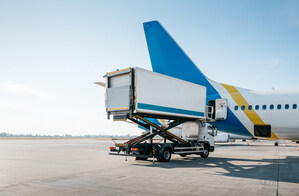Brigade Electronics: Safety Sense - How Radar is Helping to Prevent Road and Workplace Fatalities
PORTLAND, Indiana, Aug. 5, 2019 /PRNewswire/ -- The global construction market is set to grow by $8 trillion by 2030. With this rapidly increasing industry comes a large rise in the number of construction vehicles and heavy machinery using road networks to access worksites. Corey Heniser, a vehicle safety expert at Brigade Electronics INC, discusses the possible effects this could have on other road users, and what the construction industry can do to ensure safety is at the top of the agenda.
The construction industry is a huge business, generating millions for the economy every year and ensuring that infrastructure and development in key areas such as health, education, and transport are maintained.
With the rapidly growing demand for residential and commercial building comes an increase in the number of heavy construction vehicles using road networks. This includes driving in busy cities and built-up areas where they are more likely to come into contact with vulnerable road users. As a result, this has put pressure on the industry to ensure other road users, in particular cyclists and pedestrians, remain safe and that fatal collisions are prevented.
The heavy vehicles and equipment used by the construction industry, such as dump trucks, cement mixers and excavators, pose a danger if they are not managed safely. Blind spots tend to be much larger on these vehicles and include not only the rear and nearside but also the front, especially with elevated driver positions.
According to the NHTSA (National Highway Traffic Safety Administration), pedestrian fatalities have been increasing in the US. Between 2010 and 2018, the number of recorded pedestrian deaths has risen from 4,109 to more than 6,000. Many of these deaths occurred at night, when visibility was low.
Blind spots on vehicles, along with poor visibility due to bad weather conditions, are a major contributing factor to collisions and are often the main reasons why pedestrians and cyclists are killed or injured.
Safety for larger vehicles has dramatically improved in recent years, with many operators opting to invest in stringent safety procedures, including fitting vehicle safety systems to eliminate vehicle blind spots.
For drivers in the construction industry, detecting objects and people in blind spots is crucial to safety not only on the road, but also on worksites where ground workers are at risk from moving vehicles and machinery.
Sensing hazards
Radar obstacle detection technology can detect stationary and moving objects even in the harshest of environments. It gives the driver an audible and visible warning when objects are within a certain distance. One such system, which is unique to Brigade Electronics, is its Backsense Radar. It uses Frequency Modulated Continuous Waves (FMCW) technology, transmitting a continuously varying radar frequency signal with time stamps unique to each instance of the wave. The time of the returning wave is referenced to the stamp without the radar needing to pause transmission. This provides more accurate detection than alternative radar products that use pulsed radar technology, which instead transmit a burst of radar and then listen for the returning wave.
Distances on Backsense can also be programmed to suit different-sized vehicles and applications, from 6.5ft to 33ft in width and 10ft to 98ft in length. Custom detection areas can also be set to calibrate-out fixed objects or bodywork.
The data provided by radar obstacle detection can be combined with an on-screen display and fed back to the driver via an in-cab monitor. Ideal for vehicles maneuvering at low speed, the on-screen display warns the driver of obstacles in the danger zone by overlaying five-stage audible and visual radar data onto a camera image on the monitor. This informs the driver of the distance between the vehicle and obstacles.
Due to the number of complex blind spots on large vehicles, a single radar cannot always provide the levels of detection required. This is why Brigade introduced its network radar system, which enables up to eight sensors to be connected and linked to a single in-cab display. This limits distractions for the driver and further enhances safety by ensuring complex blind spots are eliminated.
Radar obstacle detection is suitable for both on and off-road applications, so it offers first-class protection for preventing collisions and saving lives.
Of course, technology is just one step towards preventing deaths and solving safety issues. In addition, operators need to ensure that there are robust procedures in place and that they are committed to implementing and executing these to ensure they are doing as much as possible to keep everyone safe.
Photo: https://mma.prnewswire.com/media/955895/Brigade_Electronics_Radar.jpg






Share this article